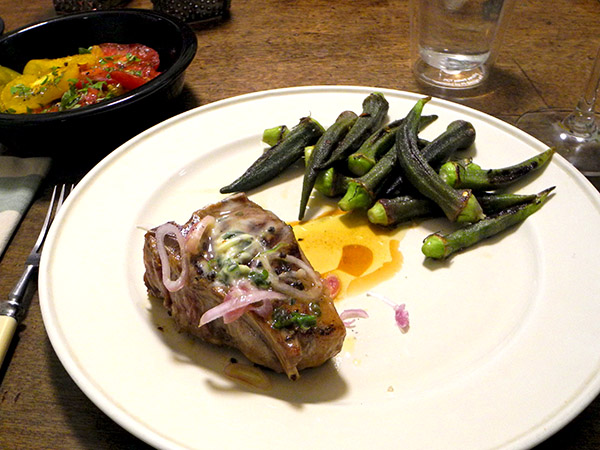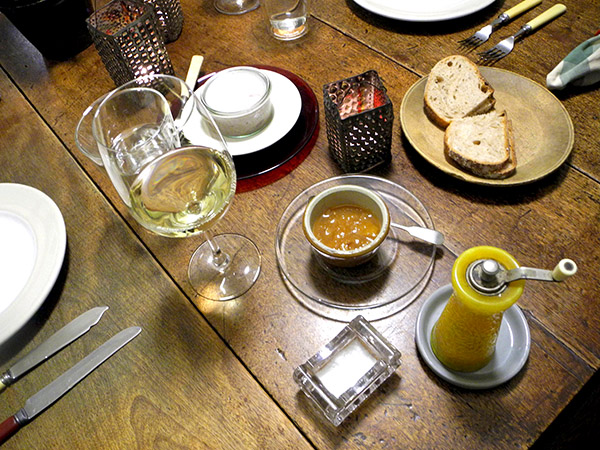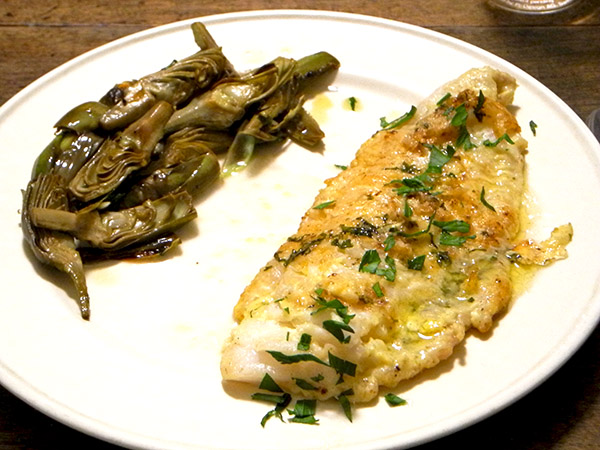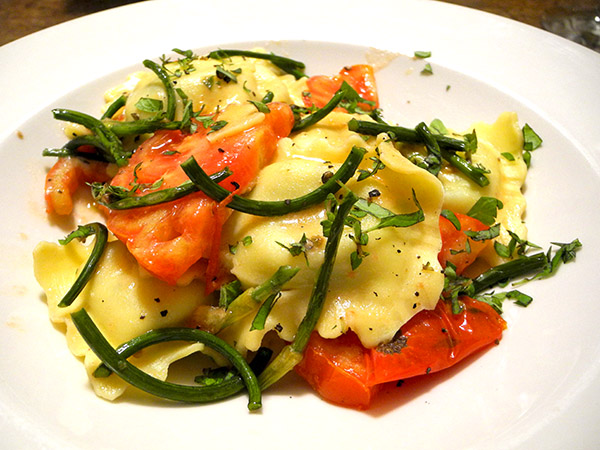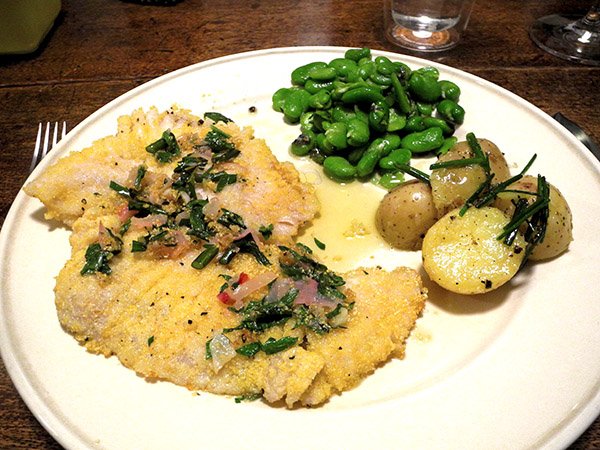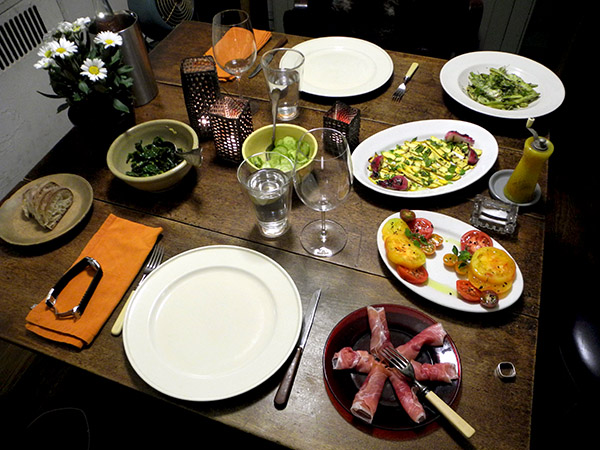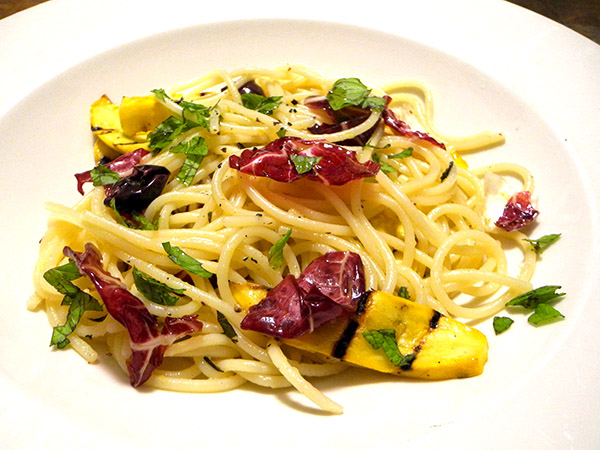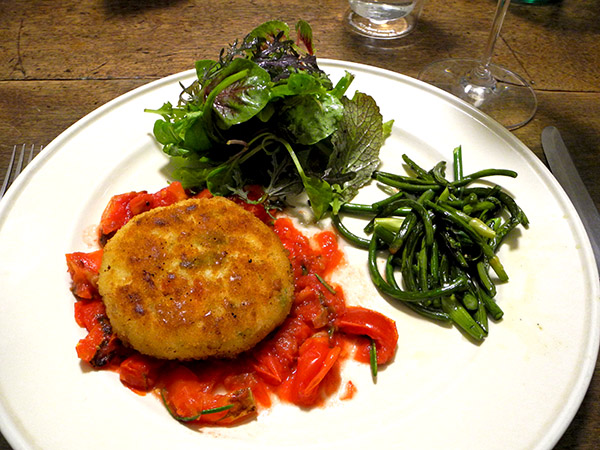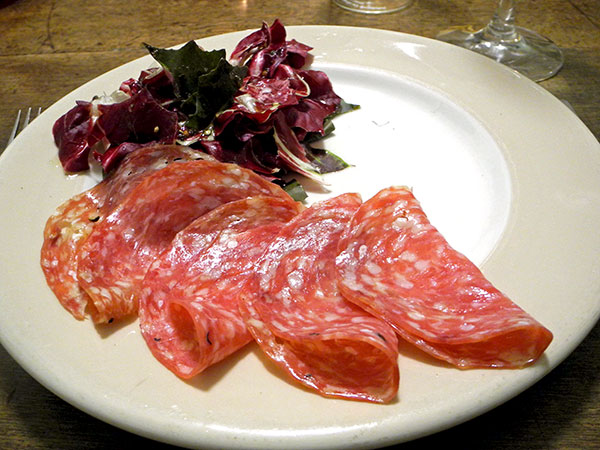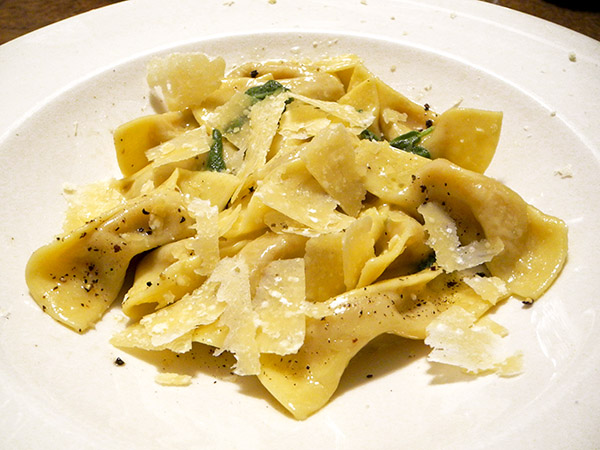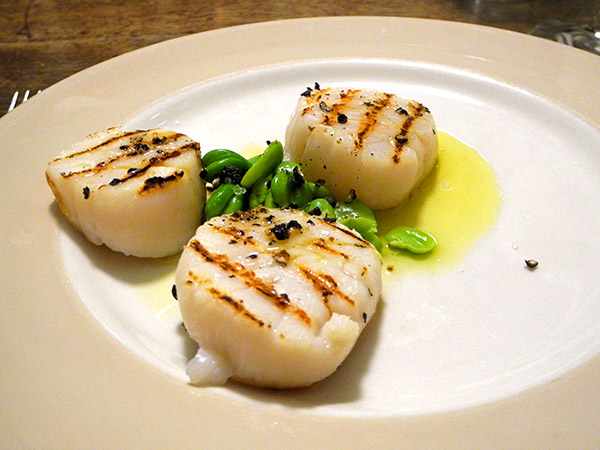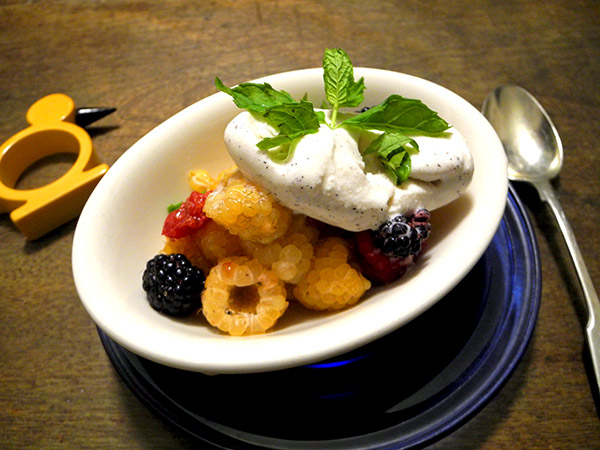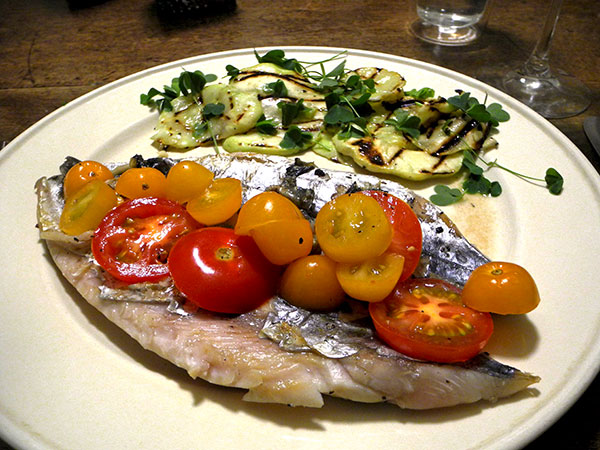Note to self: This entire meal was a tasty delight, presumably as much for the quality of the ingredients as for the simple preparation, and accolades go to the modest cheese course as well (small portions of three cheeses, and some whole wheat toasts), which is not described here.
At the Greenmarket on Saturday I tried to think of something with which the beautiful purple okra I had picked up earlier would be a good match. Then I was happily reminded that 3-Corner Field Farm was a part of the Union Square Greenmarket on that day. I bought a package of four thick loin chops, which were frozen. When I got home, I let them defrost just enough to separate the sections, so that I could place two chops in the freezer, and also two in the refrigerator, where they would defrost overnight.
The entrée I put together the next day represented the fairly rare appearance of red meat on our table, especially in the summer, but this particular appearance was a very good one.
- two thick loin lamb chops from 3-Corner Field Farm, cooked on a very hot grill pan for about 4 minutes on each side, finished with one small sliced shallot from John C. Madura Farms, a squeeze of lemon, a spreading of wood sorrel butter (the sorrel from Bodhitree Farm), and a drizzle of olive oil
- purple okra from Lani’s Farm, sautéed with crushed dried chiles in an iron pan over a high flame, seasoned with salt and pepper
- sliced red and yellow heirloom tomatoes from Stokes Farm, dressed with some good olive oil, salt, pepper, and a small amount of balsamic vinegar
- the wine was an Italian red, a very good Poliziano Rosso di Montepulciano 2012
- the music was an incredibly exciting performance of St. John Cage’s ‘Credo in Us’, by the Amadinda Percussion Group
